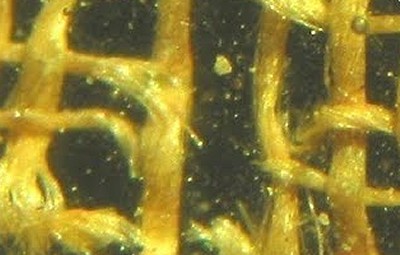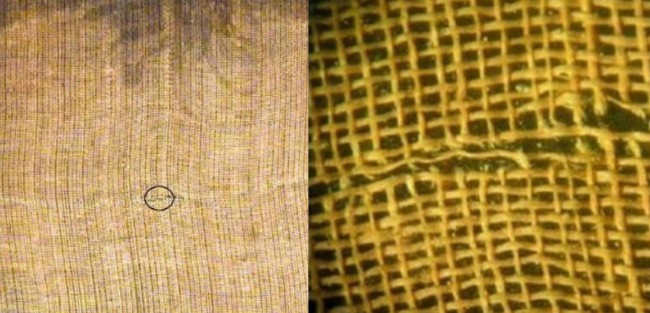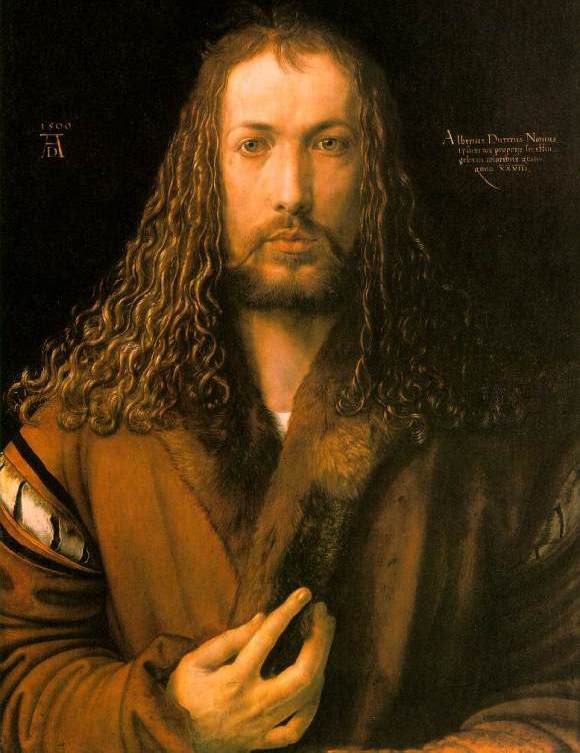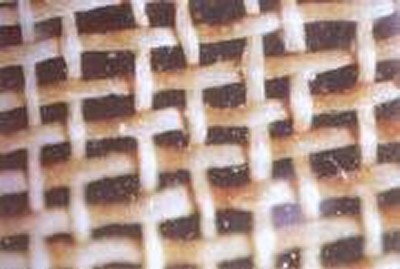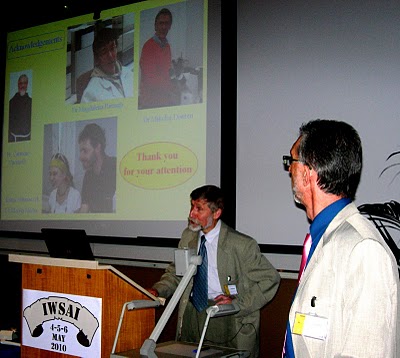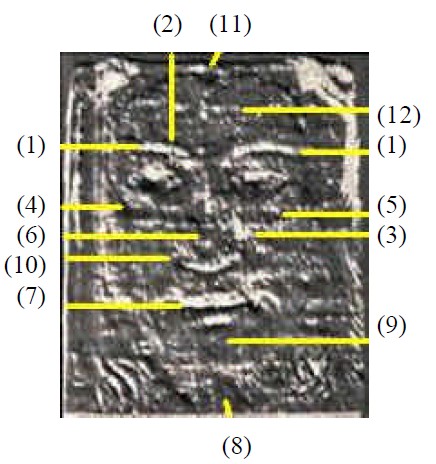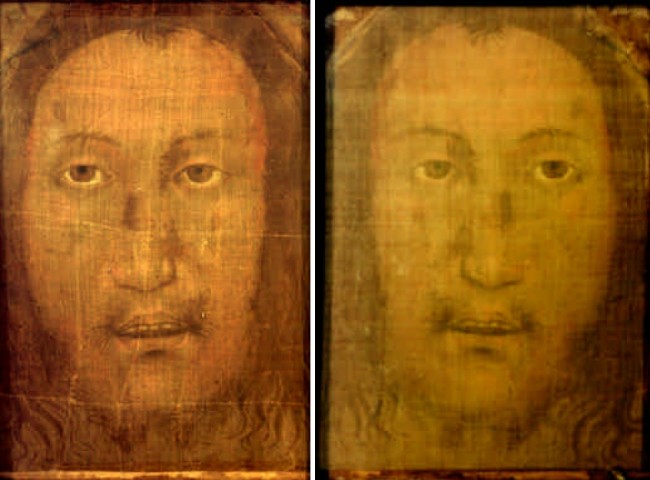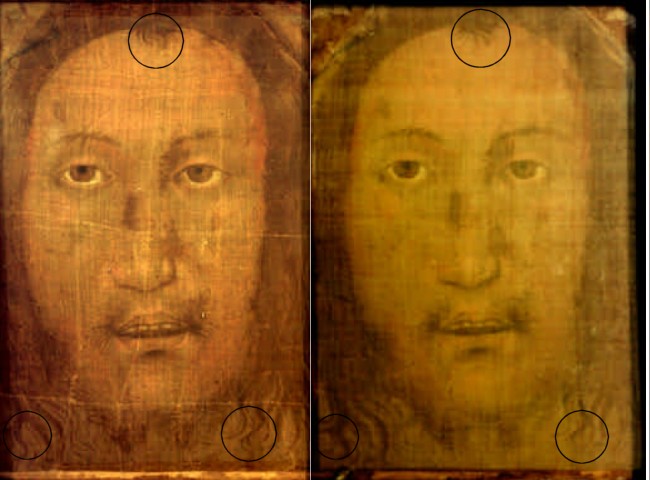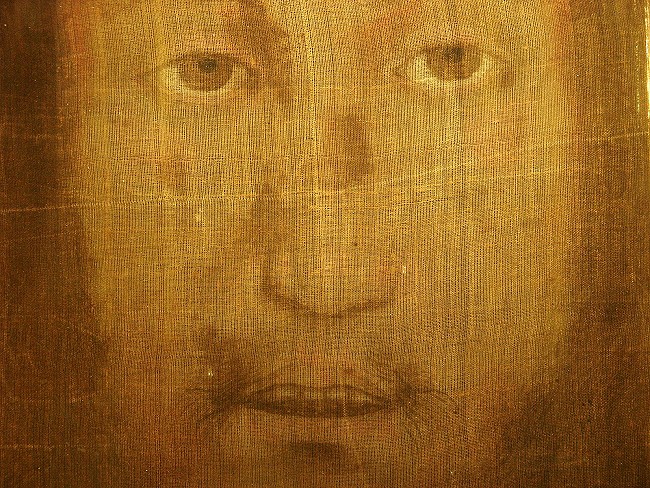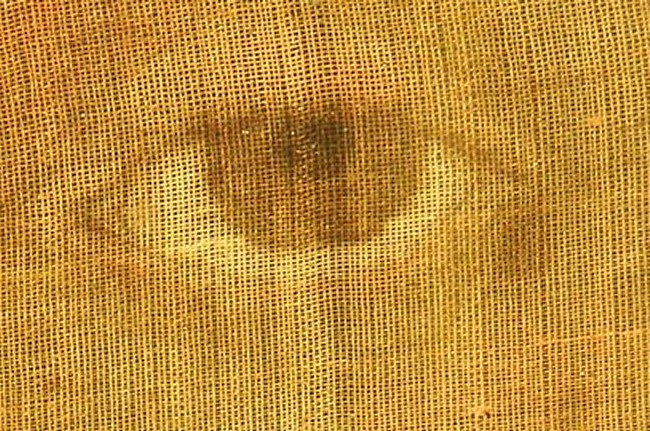
|
||
                                   |
The first scientific research was conducted by professor Donato Vitore from the Faculty of Medicine at the University of Bari in the years 1998–1999. The Veil was digitally scanned with a high definition scanner. Professor Vitore discovered that spaces between each thread of the weft and warp did not contain any remnants of dye. This led him to conclude that the Face had not been made with the use of oil paint or water-colour techniques. The outline of the image is sharp, which is especially noticeable in the parts showing the eyes, the mouth and the hair. Lines are not fuzzy, which would be visible in case water-colour were used.
A part of the beard In 2004 a hypothesis was coined which assumed that the fabric is made from sea silk. Such fabric is not suitable for painting on as its fibres have a smooth and impermeable structure so they do not absorb any liquid. Therefore, had the Image been painted, the only places of pigments concentration would be the spaces between fibres and researched showed they were not there. It is true that the natural dark brown colour of byssus may be changed to honey with the use of weak acids (e.g. by soaking it in citric acid). However, techniques which allow to make a detailed picture by decolourising the fabric are not known these days.
Microscopic structure of the fabric in which each thread is composed of 60 fibres of 14 μm on average, which makes it exceptionally transparent. Impurities are visible between the threads of the weft and warp. Threads are torn in the place of repeated folding The subsequent microscopic and spectral research was conducted in 2001 by professor Giulio Fanti of the University of Padua (mechanical and thermal engineering). He confirmed that the fabric was very thin, woven with threads of 120 μm on average in diameter (0.12 millimetres). It is thinner than nylon, a synthetic fabric made in 1945 for the first time. The weaving method is traditional which means it is simple and irregular. There are empty spaces between threads of 150 to 350 μm. Fanti confirmed the research results of 1971 when Bruno Sammaciccia exposed the Veil to a Wood's lamp. Such a portable device, thanks to a built-in filter, emits long-wave ultraviolet light which is invisible to the naked eye. A Wood's lamp is used in the analysis of artworks, e.g. for identifying the retouched spots. Dye pigments fluoresce intensively when exposed to UV. The Image of Manoppello show signs of fluorescence in the top left and right corners where father Clemente di Castelvechcio did the renovation by setting in pieces of silk. Traces of pigments were also found in other parts of the picture. Their presence may be explained by the custom of putting copies against the original in order to “sanctify” them. The analysis of the Image in infrared light did not show any sketch for the picture or any corrections whatsoever.
A microscopic photo showing a part of the Veil However, an Italian researcher Roberto Falcinelli claims that the picture was made around 1500 AD and it shows a self-portrait of Albrecht Dürer. Falcinelli also mentions that it may as well be a portrait of Rafael painted by Dürer.
Self-Portrait by Albrecht Dürer It must be emphasised that no direct examination of the fabric has been done so far. According to historical records, two attempts at taking the Veil out of the panes were made in 1703 and 1714. It turned out that the Face stopped being visible and became visible again after being placed in the old frames. Since that time nobody has tried such an experiment again.
The weft and warp: on average 27 threads of the weft per 1 centimetre of the fabric The last scientific conference devoted to the Veil of Manoppello and other Αχειροποίητος (not made by hand) images took place from 4 to 6 May 2010 in Rome. It was organised by ENEA Research Center of Frascati, an Italian National Agency for new technologies, energy and sustainable economic development.
professor Jan S. Jaworski (the University of Warsaw) at the conference devoted to Αχειροποίητος According to the research conducted by professor Jan S. Jaworski (the University of Warsaw) and professor Giulio Fanti (the University of Padua), the Image of Manoppello has other interesting attributes. One of them is its tridimensionality, but it is different than in case of the Turin relic as it is more visible when the negative of the Veil is analysed. The research was done with the use of Brice 4.0 software and it showed an amazing similitude of the characteristic points on both images.
The differences of the image on the reverse and the averse are also amazing. They are not noticeable at first glance.
Let's try to make a mirror image of the Face's averse and compare it with the reverse:
The Faces are identical but the hair arrangement is not. Such an effect may be obtained by taking a series of photos in a short time. It seems the fabric recorded two images in a short time interval. A gust of wind tousled the hair.
There are more and more people who agree with the thesis that the Image of Manoppello is a-cheiro-poietos (not made by hand).
More in the treatise: 3-D PROCESSING TO EVIDENCE CHARACTERISTICS REPRESENTED IN MANOPPELLO VEIL International scientific conferences about the images not made by hand: INTERNATIONAL WORKSHOP OF THE SCIENTIFIC APPROACH TO THE ACHEIROPOIETOS IMAGES ENEA Research Center of Frascati -- May 4 to 6, 2010 International Workshop on the Scientific
Approach to the Acheiropoietos Images A conference in which Polish scientists participated (professor Jan S. Jaworski, the University of Warsaw and professor Zbigniew Treppa, the University of Gdańsk). http://www.acheiropoietos.info/ An International Interdisciplinary Conference Devoted to Acheiropoietos Images One of the conference's aims is to update
the knowledge about objects not made by hand, referred to with a Greek word
acheiropoietos. This ancient term has a wide range of meanings. In a narrow
sense, it is used to refer to images which were made strictly without the
participation of man. In a broader sense, it refers to objects which in a more
or less conventional way deserve such a qualification with regard to Tradition. Suggested subject areas:
The conference will be held in English. The organisers will do their best to provide a simultaneous translation to Polish. The link to the webpage of the conference |
|


